Want to make your UV resin crafts stand out? Adding color is the best way to give your jewelry, art, and DIY projects a personal touch.
Whether you’re a beginner or looking to try new techniques, learning how to color UV resin opens up endless creative options. This guide will show you the best colorants, easy steps, and expert tips for bright, beautiful results every time.
Ready to level up your resin art? Read on to discover everything you need to know about coloring UV resin!
What is UV Resin and Why Color It?
UV resin is a special type of resin that hardens quickly when exposed to UV light. Unlike epoxy resin, which can take hours to cure, UV resin cures in just a few minutes under a UV lamp or sunlight. Many crafters love it for making jewelry, keychains, charms, and small art pieces.
Adding color to UV resin lets you customize your projects. You can match your favorite shades, create fun patterns, or even make realistic effects like ocean waves, gemstones, and more. Colored UV resin also hides tiny bubbles and adds extra depth to your designs.
📌Curious about the differences between UV resin and epoxy resin? Check out this helpful guide: Epoxy Resin vs. UV Resin: What’s the Difference?
Can You Color UV Resin? (Yes, and Here’s How!)
Yes, you can definitely color UV resin! In fact, coloring UV resin is one of the best ways to make your projects unique. The trick is to use the right colorants and mix them in properly, so your resin cures hard and stays crystal clear.
Some people worry that adding color might stop the resin from curing or make it sticky. This can happen if you use too much colorant or the wrong type. But with the right supplies and a few simple steps, you’ll get bright, even color every time.
What Can You Use to Color UV Resin?
There are a few different ways to color UV resin, and each one gives a slightly different look. Here are the most popular choices:
✅ UV Resin Dyes and Colorants
These liquid dyes are made just for resin. They mix easily and give a strong, transparent color. Use just a drop or two for a light tint, or add more for bold shades.
✅ Pigment Powders and Mica Powders
Pigment powders, especially mica powders, give UV resin a shimmery, opaque, or metallic look. They’re great for making resin look like gemstones, pearls, or geodes.
✅ Alcohol Inks
Alcohol inks create bright, swirling colors and can be dropped right into liquid resin for cool effects. Just be careful not to use too much, as it can slow down curing.
✅ Acrylic Paint
You can use a small amount of acrylic paint to color UV resin, but only add a tiny bit. Too much paint can make the resin cloudy or keep it from curing all the way. Stick to high-quality, water-based acrylics if you try this method.
✅ Can You Use Food Coloring in UV Resin?
Food coloring isn’t made for resin and can cause problems like streaks, sticky spots, or uneven curing. It’s best to avoid food coloring and stick with colorants made for resin.
⚠️What not to use: Don’t use oil-based paints, nail polish, or watercolor paints. These can mess up the resin’s chemistry and leave your project sticky or soft.
📌Want to see the best UV resin kits and colorants? Don’t forget to browse this collection of UV resin kits and supplies for everything you need to get started.
How to Color UV Resin: Step-by-Step Guide
Ready to start coloring UV resin? Here’s a simple process you can follow every time:
1. Gather Your Supplies
You’ll need:
- UV resin
- Your choice of colorant (dye, pigment, mica powder, or alcohol ink)
- Mixing cup and stir stick
- UV lamp or sunlight for curing
- Gloves and a protected workspace
2. Add Colorant to the Resin
Squeeze or scoop a small amount of colorant into your resin. Start with less than you think you’ll need—you can always add more if it’s too light.
3. Mix Well
Stir the colorant into the resin slowly and thoroughly. Make sure there are no streaks or clumps. Mixing too fast can create bubbles, so take your time.
4. Test the Color
Before pouring into your mold, spread a tiny bit on a piece of plastic and cure it with your UV lamp. This helps you see the final color and make sure it cures properly.
5. Pour and Cure
Pour the colored resin into your mold or onto your project. Use your UV lamp to cure it, following the instructions for your resin brand.
📌Want to make sure you’re using the best UV light? Discover top picks and tips in this guide: Best UV Light for Curing Resin
Tips for Getting Even, Vibrant Color in UV Resin
- Add color slowly: It’s easier to add more than to fix too much.
- Mix thoroughly: Scrape the sides and bottom of your cup to blend all the color in.
- Use the right amount: Too much colorant can stop resin from curing. Stick to 2-5% by volume.
- Layer colors: For cool effects, let one color cure, then pour another on top.
- Avoid bubbles: Warm your resin slightly and mix slowly to keep bubbles away.
Common Problems When Coloring UV Resin (And How to Fix Them)
Cloudy or Dull Color
This usually means you added too much colorant or used the wrong type. Next time, use less or try a different colorant.
Color Not Mixing Properly
Powders can clump if not mixed well. Use a toothpick to break up lumps and stir slowly.
Resin Not Curing
Too much color, especially paint or ink, can stop UV light from reaching the resin. Always test a small batch before making a big project.
Sticky or Soft Pieces
This is usually from too much colorant or not curing long enough. Try curing for a little longer, or use less color next time.
📌If you get resin on your hands, here’s a handy guide for safe cleanup: How to Get Resin Off Hands
How to Make Special Effects with Colored UV Resin
- Swirls and Marbling: Use a toothpick to swirl two or more colors together before curing.
- Ombre and Gradients: Pour layers of different shades, letting each cure a bit before adding the next.
- Glitter and Metallics: Mix in glitter or metallic mica powder for extra sparkle.
- Glow-in-the-Dark: Add glow powder for fun night effects.
Safety Tips When Coloring UV Resin
✅ Always wear gloves to protect your skin.
✅ Work in a well-ventilated space.
✅ Don’t breathe in powder or fumes.
✅ Clean spills right away and keep resin away from kids and pets.
📌Looking for the best UV resin and colorants? Check out this roundup: Best UV Resin: Top Picks and Buying Guide
Inspiring Project Ideas with Colored UV Resin
- Jewelry: Make earrings, pendants, and rings with your favorite shades.
- Keychains: Use silicone molds for fun shapes and add glitter or charms.
- Home Décor: Create colorful coasters, magnets, or small trays.
- Charms and Miniatures: Make cute animals, flowers, or even food-shaped charms.
Final Tips for Coloring UV Resin Like a Pro
✅ Practice with small batches before making big projects.
✅ Keep a notebook to track your favorite color mixes.
✅ Store colorants in a cool, dry place.
✅ Clean tools right away to keep them ready for next time.
Conclusion
Coloring UV resin is a simple way to transform your crafts into vibrant, one-of-a-kind creations.
With the right supplies and a few easy techniques, you can achieve bold colors, cool effects, and professional results at home. Remember to experiment, practice, and have fun with your projects!
For more in-depth guides, creative ideas, and top products for UV resin crafting, don’t forget to check out Resiners. Your next colorful masterpiece is just a mix away!
📌If you want even more ideas and supplies, don’t forget to browse this UV resin kit collection for inspiration.
Frequently Asked Questions About How to Color UV Resin
What is the best way to color UV resin?
The best way to color UV resin is to use resin-specific dyes, mica powders, or pigment powders. Add a small amount at a time and mix thoroughly for even color. Always test a tiny batch before making a large project to make sure it cures properly.
Can I use acrylic paint to color UV resin?
You can use a small amount of acrylic paint, but too much can make the resin cloudy or prevent it from curing fully. Stick to just a drop or two and mix well. Resin dyes and powders work better for clear, bright results.
Can I use food coloring for UV resin?
Food coloring is not recommended for UV resin. It can cause streaks, uneven curing, or sticky spots. Use colorants that are made for resin for the best results.
Can you use pigment in UV resin?
Yes, pigment powders and mica powders work well in UV resin. They give strong color and fun effects like shimmer or metallic shine. Just be sure to mix them in thoroughly.
What can I mix with UV resin?
You can mix in resin dyes, mica powders, pigment powders, alcohol inks, and small amounts of glitter. Avoid oil-based or water-heavy products, as they can stop the resin from curing.
Related articles:
How to Dye Epoxy Resin: Easy Color Techniques To Try
Types of Resin: A Crafter's Guide to Finding the Perfect Pour

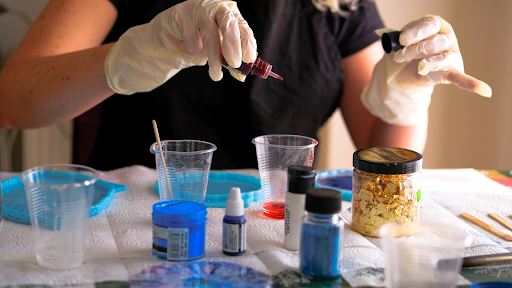
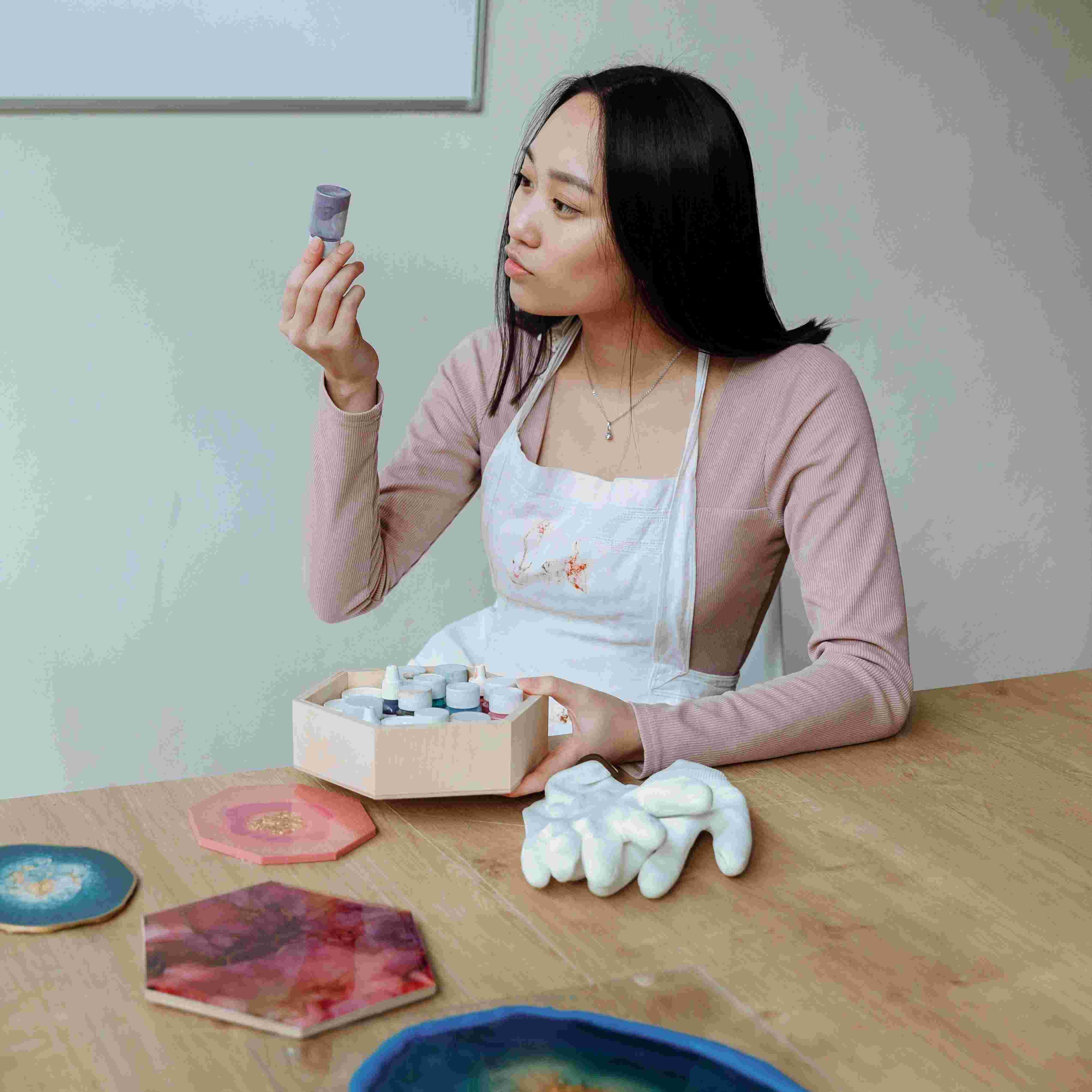
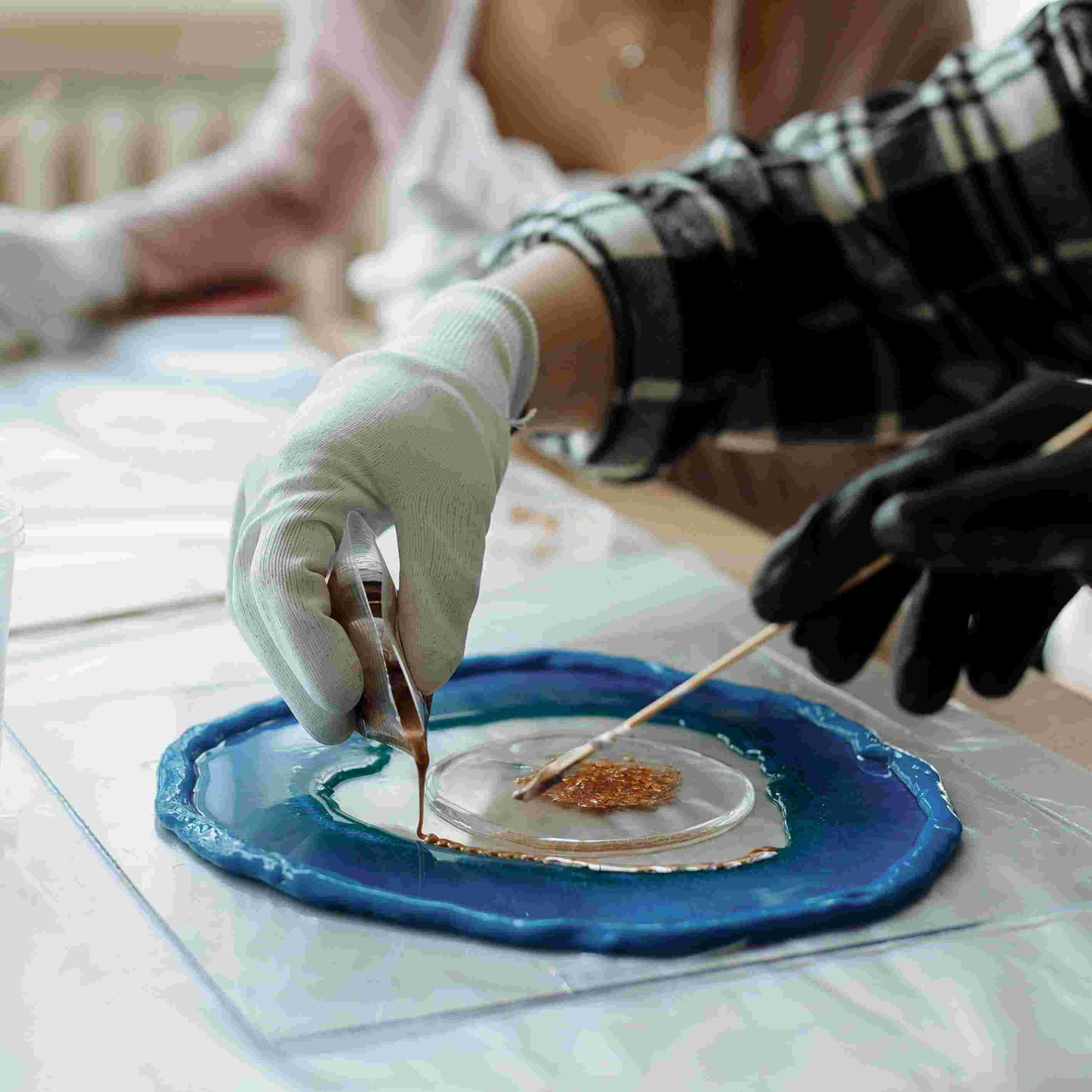
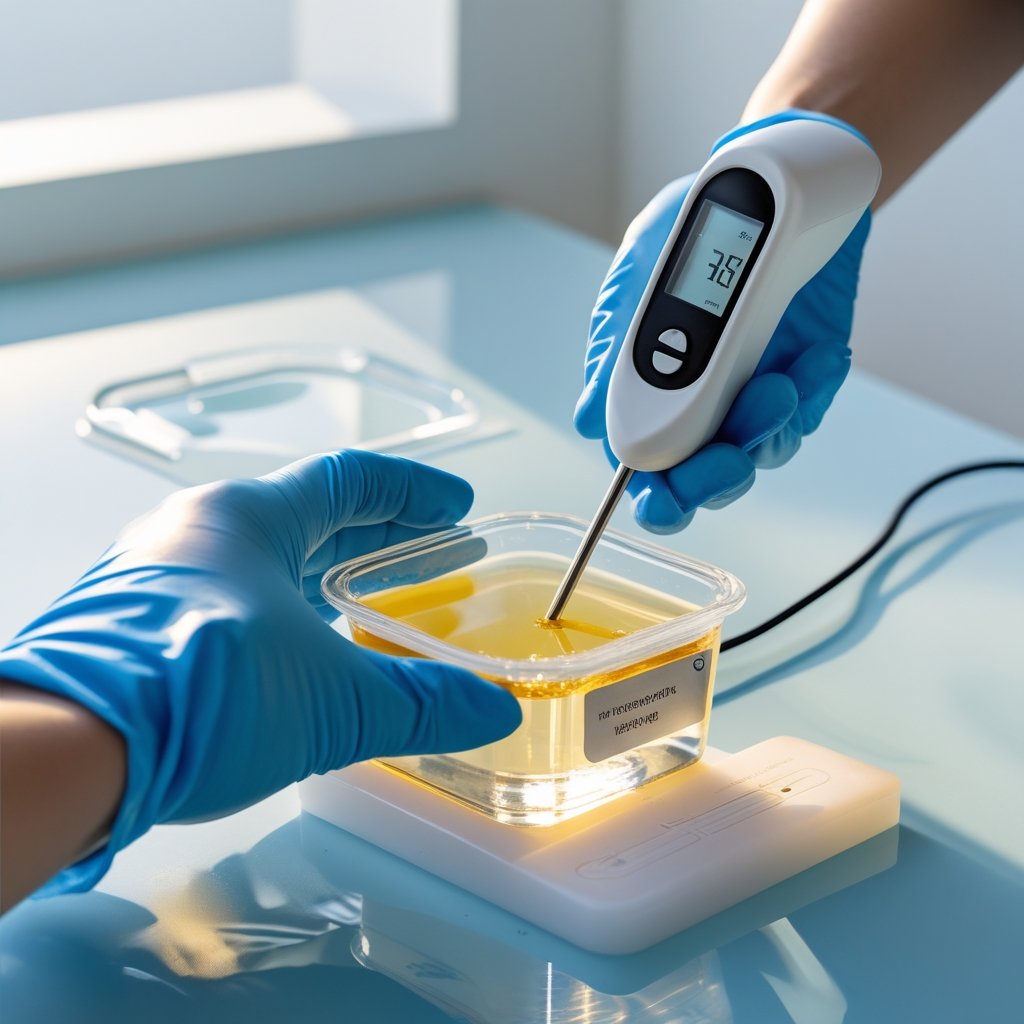
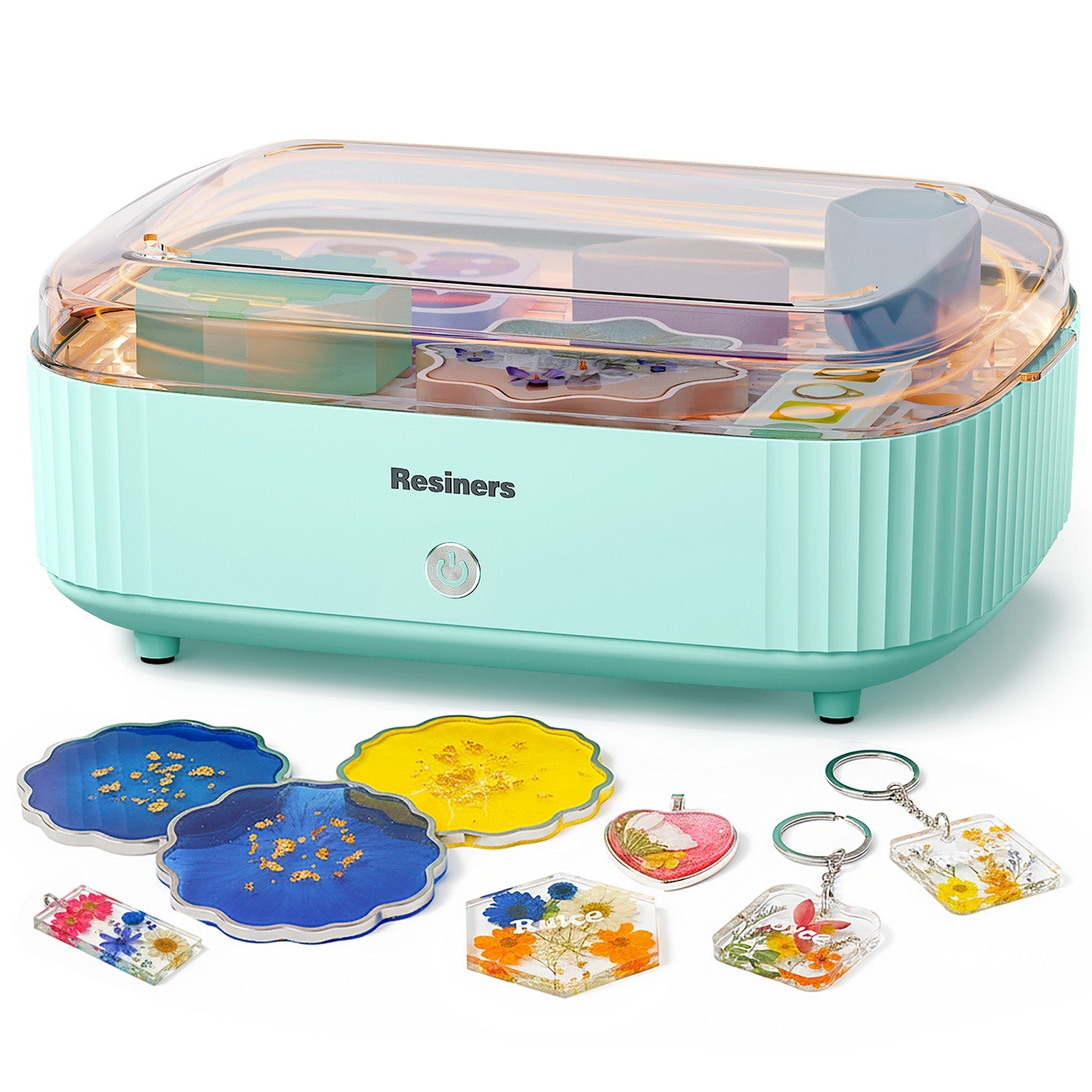
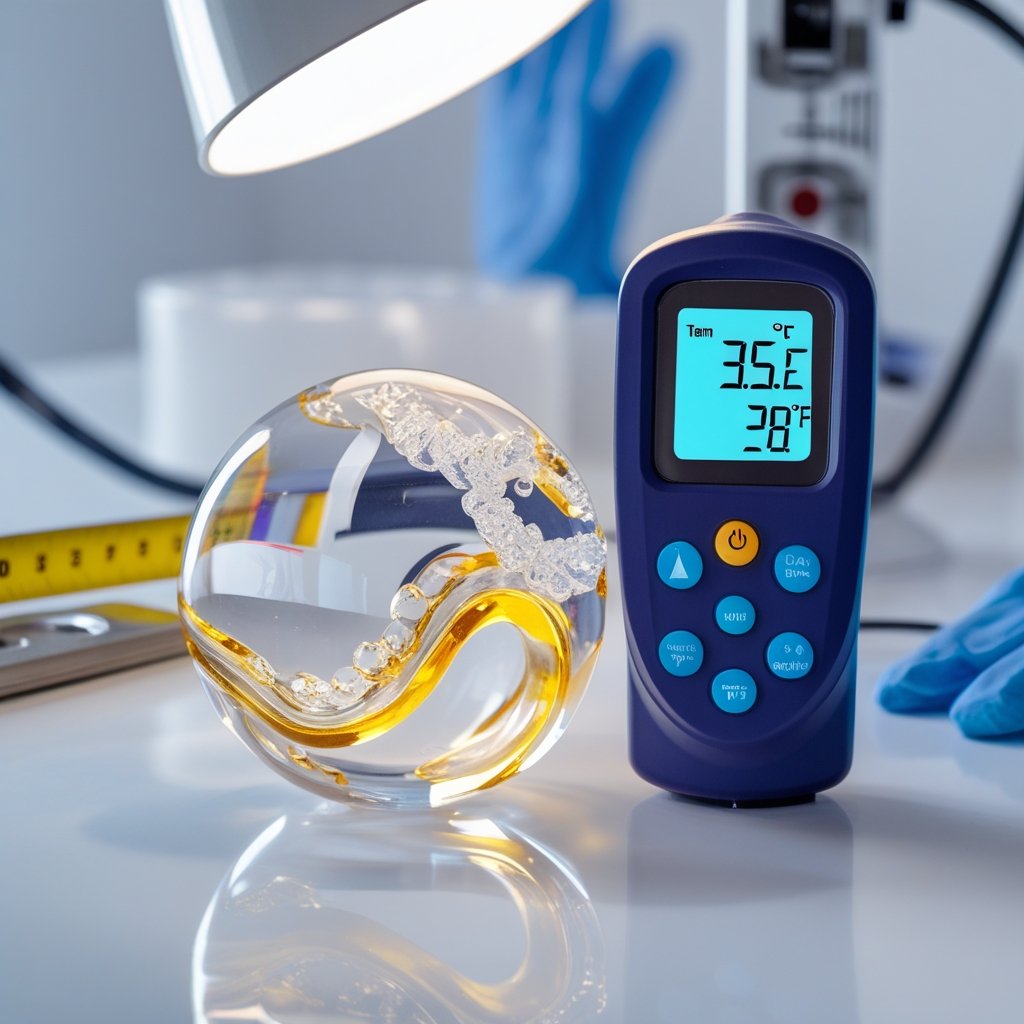

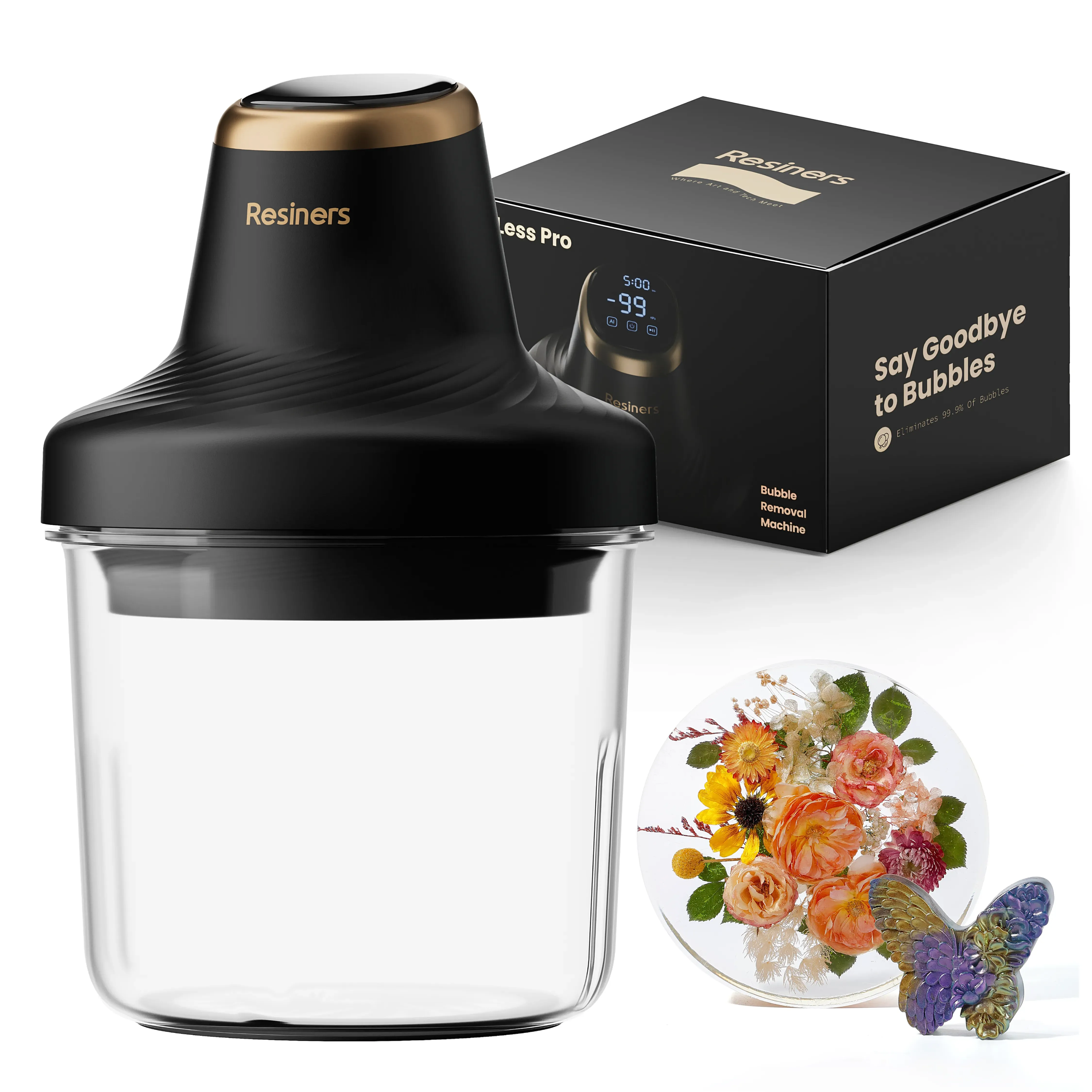
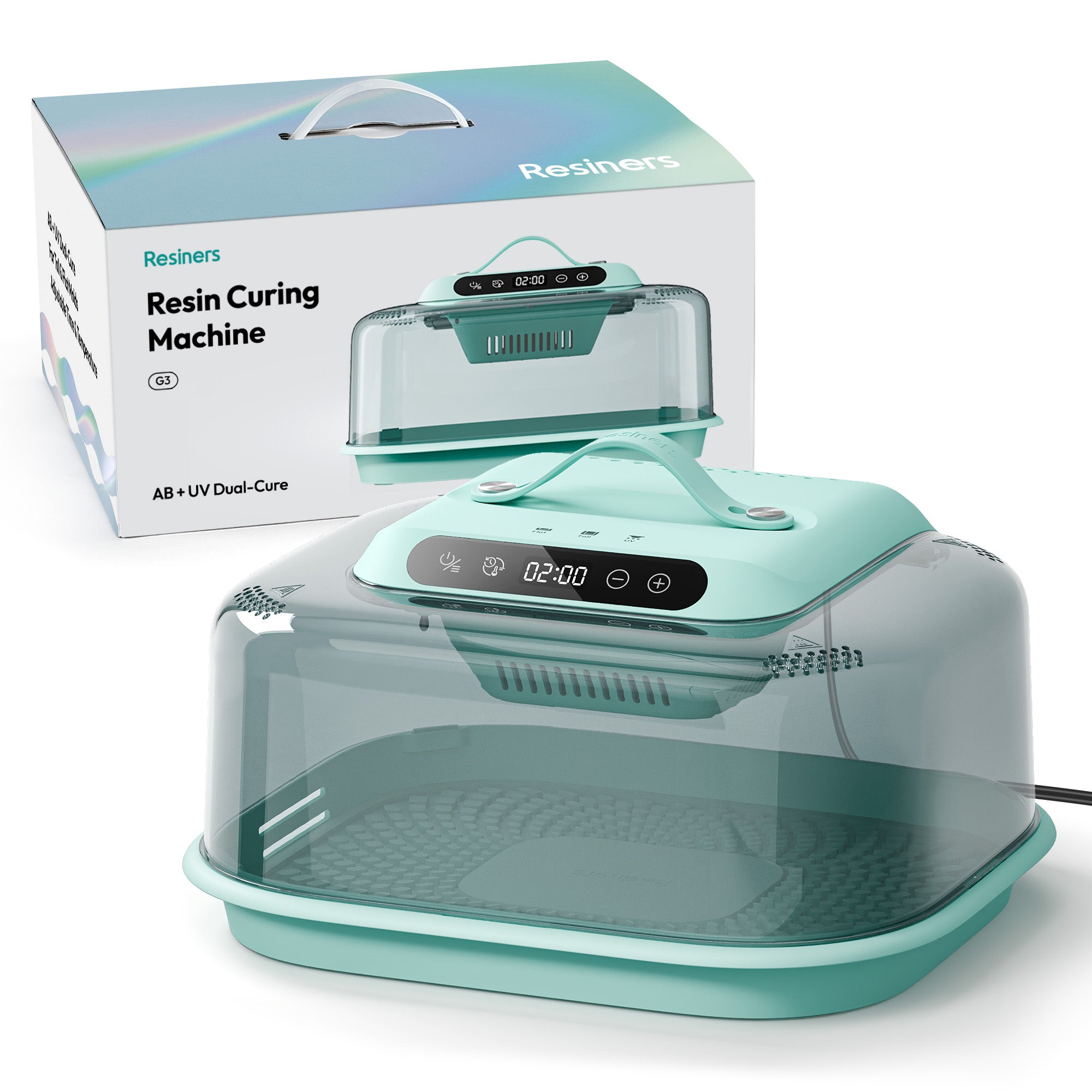

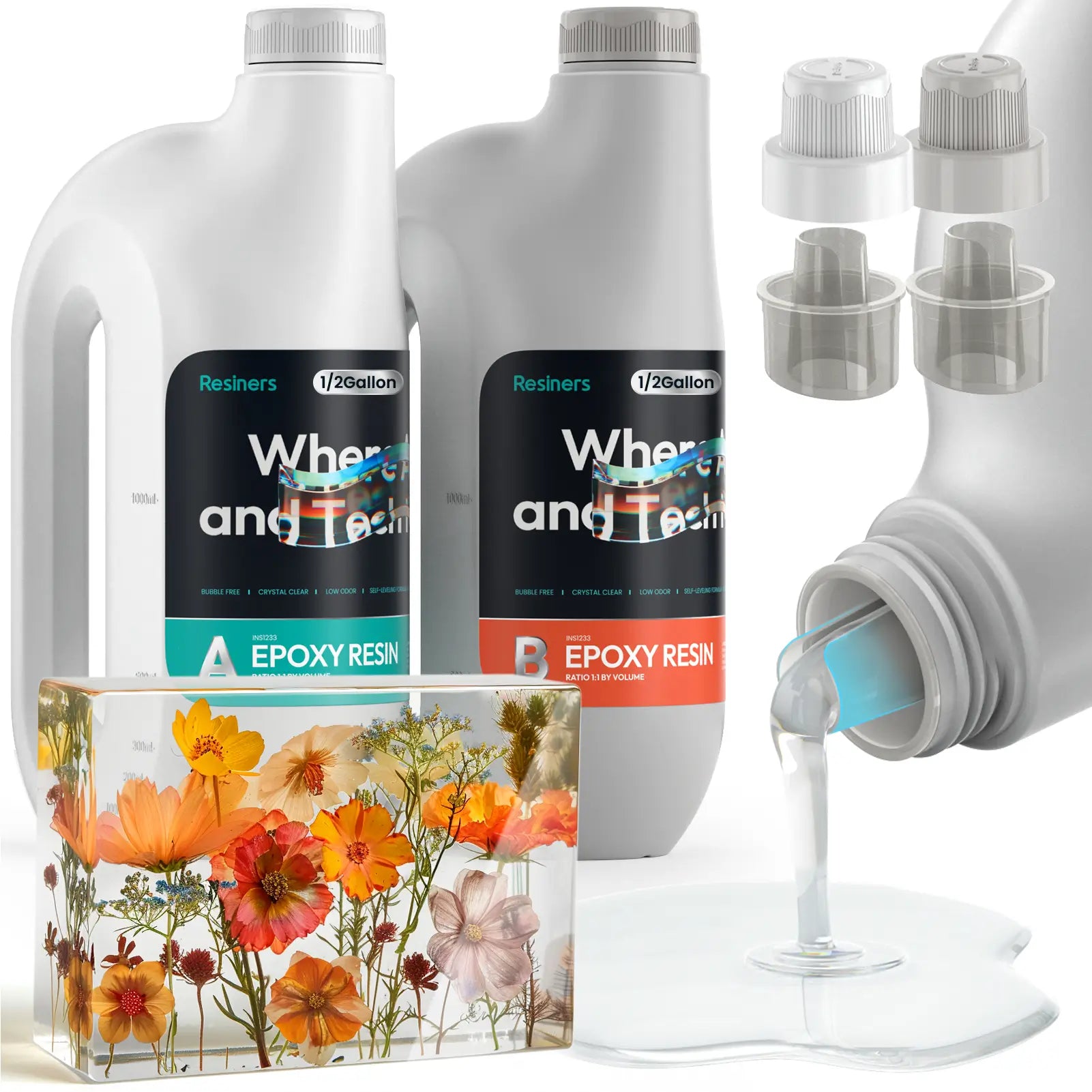
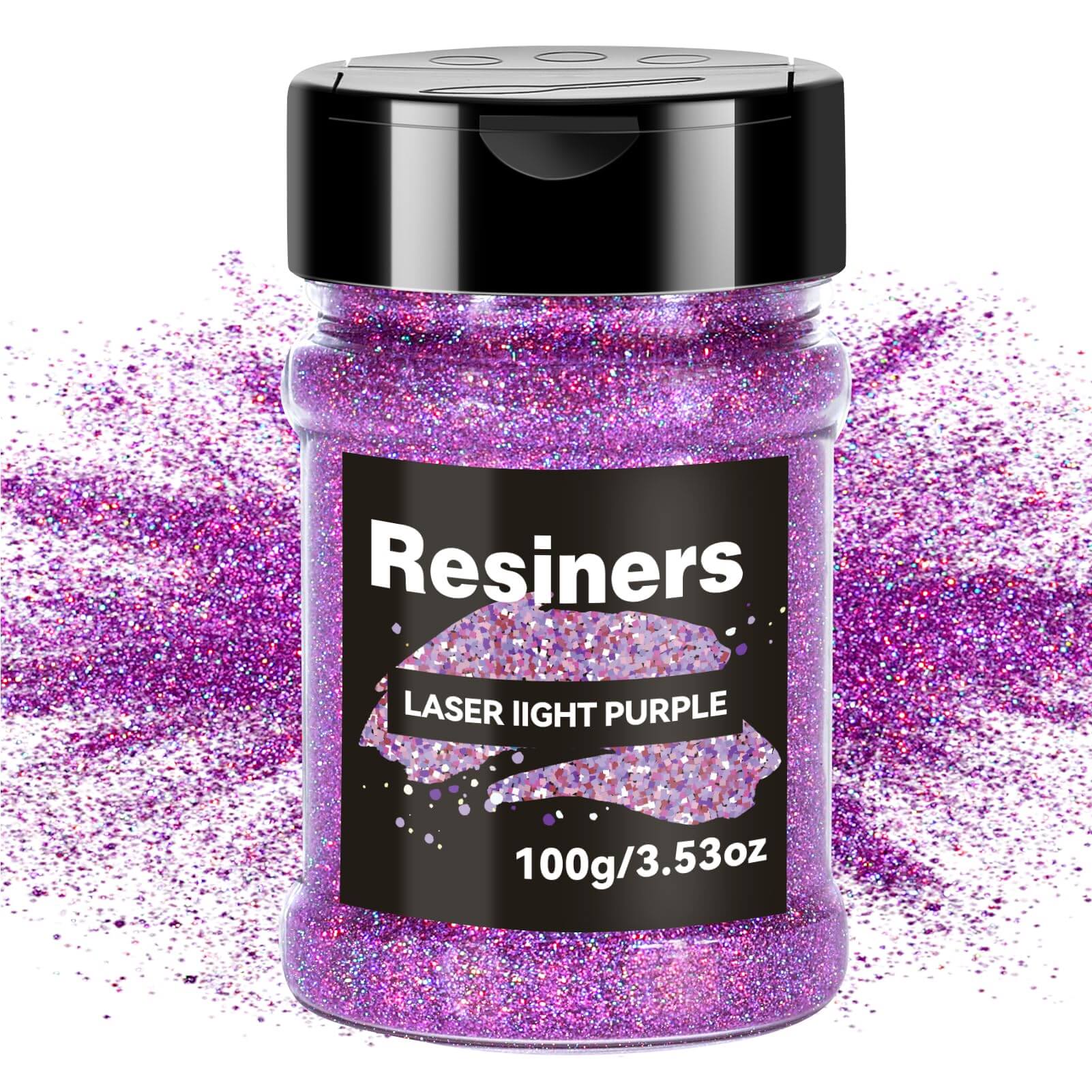
Leave a comment
This site is protected by hCaptcha and the hCaptcha Privacy Policy and Terms of Service apply.